Human Settlement: Miners, Homesteaders, and Route 66
During the mid-19th century, mining in all areas of the Mojave created boom towns with colorful names and characters.
On Christmas Day in 1860, for example, the first producing Mojave mine, named “Christmas Gift,” was opened in
Death Valley. As
the mining boom continued, borax—“the white gold of the desert”—was discovered; it has been mined
profitably in the Death Valley area since. During the 1870s, the Clark Mountain Mining district was established
and with it the town of Ivanpah, which at the time was the only American community of any size in the eastern
portion of the Mojave.
Gold was discovered in El Dorado Canyon in the late 19th century, where a single mine ultimately produced $1.7
million in gold. Small prospectors, however, generally made very little money, the biggest problem being the
costs of transporting supplies to such remote locations. “Boom-or-bust” mining was the usual approach: As soon as
a strike played out, miners moved on, leaving
ghost towns
in their wake.
With the coming of the
Santa Fe Railroad,
water and other supplies were made available to companies intent on
capitalizing on the Mojave’s resources. In the early 1900s, more mines were open and profitable in the Mojave
than at any previous time, establishing such towns as
Cima,
Kelso,
and Fenner. Demand for Mojave metals such
as gold, silver, and manganese, peaked during World Wars I and II. Today most Mojave mining is for gold and
nonmetals such as borax. Beginning in 1910, land was homesteaded in the Mojave Desert, usually in 64.8 ha
(160 ac) parcels. Claimants had three years in which to improve their properties to receive a deed from the
General Land Office, a predecessor of the Bureau of Land Management. Among the came from other parts of California
to settle in the Lanfair Valley area.
For a few years after 1912, rainfall was relatively plentiful, and crop production was vigorous enough that
more people were attracted to the area. Mustard-gas victims of World War I also came to take advantage of the
benefits of the dry desert air. Ultimately, the rains didn’t last, and water rights conflicts erupted between
homesteaders and ranchers. In many cases, after digging unsuccessful water wells, homesteaders were forced to
haul water for several kilometers for household use. Many small farms and homesteads were abandoned with only
tiny cabins left behind.
During the 1920s,
Route 66
appeared out of a desire to improve the road network in the West, which featured
a hodgepodge of tracks and trails that had been established by American Indians and pioneers. A descendant of
the early 1900s “National Old Trails Road,” the new two-lane route would join the Midwest to California. Route
66 was also to become a legend—“the Mother Road” and “the Main Street of America”—immortalized in John
Steinbeck’s The Grapes of Wrath, Nat King Cole’s “(Get Your Kicks on) Route 66,” and a popular 1960s television
show.
During the Great Depression of the 1930s migrants sought out the Mojave as an area where they might be able to grow their
own food without regard for unstable world markets. Sandstorms and drought drove millions from the Dust Bowl
toward California on Route 66. During and after World War II Americans traveled the route heavily, though the
roadway was narrow and accidents frequent. In 1956 interstate highways, including Routes 40, 15, and 10 through
Arizona and California, began to skirt around the towns along Route 66 closely paralleling the older route. By
1985 the last of these, Williams, Arizona, was bypassed.
It is no longer necessary to drive any part of Route 66 to reach California from Chicago. However, a new
generation of travelers has made a hobby of tracing authentic pieces of the highway, following the “Historic
Route 66” signs that began appearing in 1995 in all of the route’s eight states.
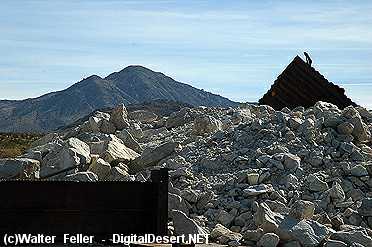
Rubble & ruins at Ivanpah - Mojave National Preserve
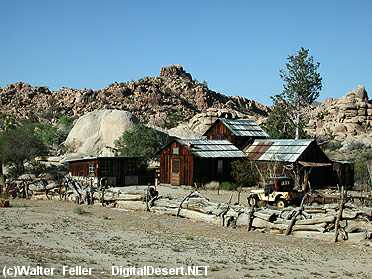
Desert Queen ranch - Joshua Tree National Park
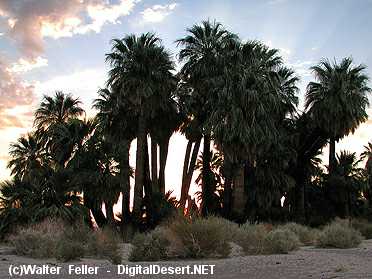
Oasis of Mara - 29 Palms/Joshua Tree National Park
-
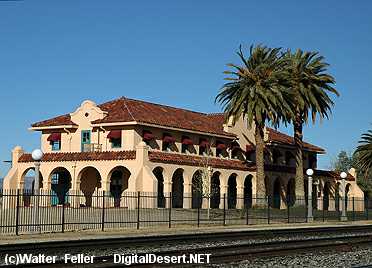
Kelso Depot - Mojave National Preserve
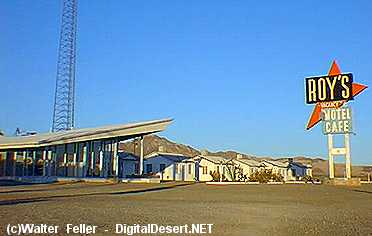
Roy's Route 66 motel & restaurant - Amboy, Ca.